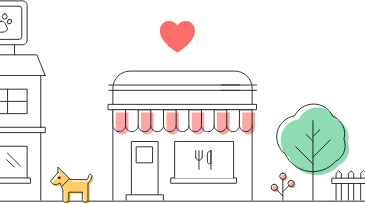Restructuring your Business Model Online
With the ongoing COVID-19 pandemic, your business model may have been upended. If you’re a restaurant, fitness studio, hair salon, clothing store, or another business that serves customers in-person, you may be weighing the options—should you temporarily close your business, or move your model online? If you want to keep cash flow coming during this period of crisis, there are a number of creative ways to move your goods and services digital.
As you read this, your customers are likely browsing the internet, too, looking for ways to occupy themselves during days at home. Google search trends show users across the world wanting to pick up new skills like learning to make bread and finding ways to get exercise at home with online yoga and fitness classes. What does this spell? Opportunity.
Read on to learn how you can take advantage of shifting customer demand and shift your business model online.
Create an eCommerce Platform
One essential step in moving your business online is creating an eCommerce store (if you don’t already have one). Whether you run a hardware store, a cosmetics boutique, or you’re an acupuncturist, a sales portal can be essential—even if you can’t currently sell your full line of services, you can get creative. Do you have any other products you can sell online? Could you offer a gift card people can purchase to support your business and use at a later date?
These days, building an online store is easier than ever. Consider the following platforms that make it easy to list products and receive payment:
- Shopify
- Squarespace
- Wix
- Weebly
In addition, if you already use a platform—like MindBody or Acuity—to let your clients schedule in-person appointments, you can easily make the switch to listing virtual classes and services.
If you already have a website through one of the above platforms, adding an online store isn’t too complicated.
Do you use another website builder or host? You can consider embedding your new store page, or linking to it from your existing website. Once your digital storefront is up and running, be sure to:
- List products and services in your inventory
- Connect a payment processing software
- Make it easy for customers to inquire via an email or contact form
Consider New Goods and Services
When you start to think about creating your online store, you may find that you’re not exactly sure what products and services you should list. After all, the vast majority of your services might be unavailable online. However, that doesn’t mean you’re out of options.
Let’s take a look at some of the innovative ways that small businesses have already adjusted their online services.
Virtual Classes
Are you a language school, crossfit studio, or a knitting store that usually offers classes and workshops in person? You have the power to transition to an online format. Consider teaching classes online through the following free websites:
- Zoom – Zoom has already become a popular way to teach live group classes for colleges, universities, fitness studios, and more. With many free options and affordable paid subscriptions, Zoom makes it possible to see your students (and vice versa), share your screen, and even work together in a whiteboard space. Passwords protect your classes to keep out uninvited users.
- YouTube and Facebook Live – If you don’t need to see your students to offer your classes, you can consider streaming your classes through YouTube Live or Facebook Live. While these platforms render it difficult to collect payment, native options might allow users to “tip,” or you can simply request registration and payment before you distribute the video link.
- Vimeo – If your classes don’t need to be taught live, consider using Vimeo to provide your customers access to free or paid videos.
While adjusting to online teaching can take a little work, once you get used to it, you can create a full roster of classes. Be sure to post information about your weekly schedule on your website and social media.
From Private Sessions to Classes and Seminars (and Vice Versa)
Online classes can be fantastic for experienced instructors and new teachers alike. If you usually offer private services like massage, pet grooming, or catering, you have valuable skills related to your profession. While you may not be able to see your clients right now, you could offer group seminars and online “follow-alongs.”
They’ll likely be grateful they can continue to enjoy your services at home.
If you regularly teach classes, you might have opted to charge less for online sessions. In this case, consider taking on more clients for private lessons at a discounted virtual rate, too. This is a great way to help you start building customer relationships.
Changing Your Inventory
If you’re a restaurant or bar, you may not be able to maintain your business on takeout orders alone. After all, if you’re new to takeout, you may not show up on popular apps like Seamless (due to a lack of reviews), or your food might spoil during a long car or bicycle ride.
Have you considered changing your inventory?
A number of restaurants have succeeded by temporarily transforming themselves into markets.
Consider the following strategies:
- If you’re a restaurant or bar, create a weekly wine club subscription curated by your in-house wine experts and develop a stable customer base.
- If you’re a restaurant, create a store to sell grocery or essential goods delivery or pickup. You could even add classes and videos to show customers how to use or cook them, further integrating with the community and expanding your services.
- Create a CSA (community supported agriculture) box subscription, allowing users to pick up a curated box of groceries on a weekly basis.
- Offer takeout options alongside your groceries, too.
A benefit of subscriptions? They make your monthly income more predictable and encourage customer loyalty. In addition, they provide safety and security to customers who might be staring upon empty shelves at their local grocery store.
Keep Your Community Posted
As you move to an online business model, you should use digital marketing strategies to let your customers know about your migration.
This means:
- Update your website to announce changes to your services.
- Post regularly on social media. Remember to respond to comments and regularly check your messages, too!
- Keep connected to your customers via your newsletter. If you don’t already use email marketing strategies, now is a great time to start.
- If you have a brick and mortar location, consider posting a sign outside of your shop so that passerbys know where they can find you online.
The more that you can spread the word about your online business model, the more likely you are to retain current customers (and introduce your SMB to new ones, too). Be sure to use your existing network of customers and community partners when spreading the word.
Connect with Other Local Businesses
As a small local business, your priority is to support the community. As you move to an online services model, consider ways of partnering with other local businesses. One example is this San Francisco based grocery store, Bi-Rite, which has been partnering with other local businesses to offer food to healthcare workers impacted by COVID-19 through a campaign called #PayItForwardTuesdays.
Other examples:
- Stock a local artisan’s product in your online store
- Include another local business’s grocery product at your new restaurant market
- Partner with other local businesses to cross-promote classes and sales
- Cross-post each other’s sales and promotions
Connect with Customers on Nextdoor
Nextdoor is a way in which you can connect with neighbors who want to support small businesses during the COVID-19 pandemic. 98% of Nextdoor members agree that local businesses are important to the fabric of their neighborhood, and 79% discover newly opened businesses in their area through word-of-mouth from friends, family, and neighbors.
When you create your Nextdoor Business Page, you can start connecting with these customers—for free. It’s easy to set up and customize your Business Page to include contact information, your unique story, information about goods and services, and your website link.
- You’ll begin to show up in neighborhood search results once you have a single recommendation.
- Once you’re live, you can begin to join local conversations, see how other businesses are adjusting their services, and connect directly with your customers that live in proximity.
- You can run sales and promotions on Nextdoor.
- Still waiting for your first recommendation? Your existing customers may already use Nextdoor.
As you become more active on Nextdoor, you’ll grow your network, keeping your finger on the pulse of your community’s needs.
This can help to inform and adjust your online business model.
Meeting Customers Where They Are
When it comes to transitioning your business model online, it’s all about meeting customers where they are—and right now, that’s in their homes, on their computers.
Just follow the steps above:
- Transition goods and services online
- Set up an eCommerce store
- Spread the word about your new offerings
- Connect with your community on Nextdoor
There’s no better time than now to embrace digital marketing and support your community. When you’re finally able to reopen, your business will be more vital to your neighborhood than ever. For now, focus on making the connections that can help you and your neighbors push through these difficult times and come away with a better future.
If you are a local business, claim your free Business Page to get started on Nextdoor. Resources on how to use Nextdoor to stay connected with your local customers during coronavirus, pertinent news affecting businesses, and more, are available in our Small Business Guide for Coronavirus Relief.





-1%20(1).jpg?width=200&name=iStock-1140598547%20(1)-1%20(1).jpg)
.jpg?width=200&name=NextdoorOakland-134-min%20(1).jpg)
.jpg?width=200&name=iStock-1160229044-min%20(1).jpg)
